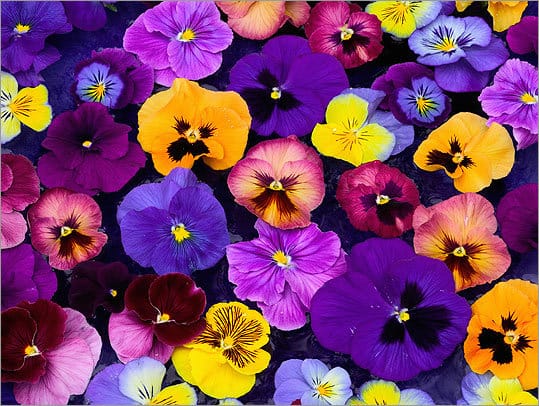Source(s): Raymond Kessler, Extension Horticulturist, Alabama Cooperative Extension Service, Auburn University.
The flower most often planted in the fall by Georgia gardeners is the pansy. The main reason pansies are so popular is the fact they provide a colorful floral display for almost 6 months during the fall, winter, and spring. Few other bedding plants can perform as well in the landscape.
Growing Pansies
Pansies grow best when night temperatures are below 65 F, which makes them ideal for fall gardens. Plant them from mid September into October, depending on where you live in Georgia, for blooms that last until hot weather starts in April. Even though plants are available for sale in packs earlier in garden centers and mass-market outlets, planting when it is too hot can cause problems for the plants. Pansies can survive temperatures as low as 2 F in the winter.
A big plus with the pansy is the variety of colors. Pansies can be purchased in almost every color of the rainbow, even those with black flowers! There are solid colored pansies and pansies with faces.
Pansies also come in a variety of sizes. The large category has blooms that range in size from 3 1/2 inches to 4 1/2 inches. Medium size blooms run 2 1/2 inches to 3 1/2 inches. The small, or multiflora, bloom sizes run 1 1/2 inches to 2 1/2 inches. Generally, pansies with smaller flowers tolerate heat and adverse growing conditions better than the large flowered types. Some pansies that grow well in Georgia include the Springtime Yellow Blotch, Universal Plus Yellow Blotch, Happy White Face, and Imperial Pink Shades.
Pansies love to grow in full sun, but they also will grow and flower in part shade better than other annuals.
In most cases, pansies perform much better in the landscape if you do a good job of preparing the soil. Choose a location with well-drained soil. Pansies will not grow well in soil that stays constantly wet. Work 4 to 6 inches of organic matter, such as garden compost, peat moss, soil conditioner or well- rotted leaves, into the soil with a shovel or tiller.
Ideally, you should perform a soil test to determine how much fertilizer and limestone to add to the soil. Contact your county extension agent for instructions. Pansies grow best in a soil with a low pH, so little if any limestone is usually needed. They don’t need a high amount of fertilizer, so fertilize sparingly.
Plant pansies in the bed at about the same level they were growing in the packs or just slightly higher. Don’t plant them too deep, with soil covering the stem. After planting, cover the surface of the soil with 4 to 6 inches of mulch such as pine straw, pine bark or wheat straw. Water the bed thoroughly, immediately after planting to a depth of at least 6 to 8 inches. Remember to check the bed for watering in the first 3 weeks or until they establish a root system and begin growing.
Pansies have many applications in the winter landscape. They add drifts of single-colors to an otherwise dull winter landscape or as a mass planting with several colors mixed together. Use pansies in a flowerbed with colors appropriate for holidays such as red and white for Christmas. Pansies also perform well in containers placed on the deck or patio or next to the entrance to your home.
Resource(s): Success with Pansies in the Winter Landscape
Center Publication Number: 121
- Growing Pansies: A Colorful Display for Fall, Winter, and Spring - September 24, 2013